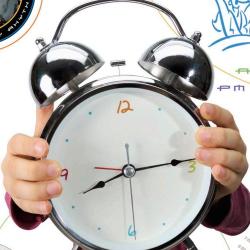Source Institutions
Source Institutions
Add to list Go to activity
Activity link broken? See if it's at the internet archive

In this activity (on page 1 of the PDF), learners make a "mini-globe" to investigate the causes of day and night on our planet. This is an introductory activity in a guide related to the science of sleep and daily rhythms. This lesson guide includes background information, information about cooperative learning, setup and management tips, extensions and handouts.
- 10 to 30 minutes
- 30 to 45 minutes
- $1 - $5 per group of students
- Ages 8 - 14
- Activity, Experiment/Lab Activity, Lesson/Lesson Plan, Model, Simulation
- English
Quick Guide
Materials List (per group of students)
- Large paper clip
- Table tennis (ping-pong) ball or round foam ball (diameter of 1/2 in.)
- Colored markers or pencils
- Sheet of cardstock (8.5 in. x 11 in.)
- 2-3 strips of masking or clear tape
- Copy of student sheets (pp. 4-5)
Subjects
-
Earth and Space Science
- Earth Structure
-
Earth, Moon and Sun
- Days
-
Life Sciences
- Human Body
-
Mathematics
-
Data Analysis and Probability
- Data Analysis
- Data Collection
- Data Representation
-
Geometry
- Solid Geometry
-
Data Analysis and Probability
-
Physical Sciences
-
Motion and Forces
- Rotation Motion
-
Motion and Forces
-
The Nature of Science
-
The Scientific Process
- Conducting Investigations
- Gathering Data
- Formulating Explanations
- Communicating Results
-
The Scientific Process
Informal Categories
- Model Building
Audience
To use this activity, learners need to:
- see
- read
- touch
Learning styles supported:
- Involves teamwork and communication skills
- Involves hands-on or lab activities
Other
Includes alignment to state and/or national standards:
This resource is part of:
Access Rights:
- Free access
By:
- Moreno, Nancy P. ; Tharp, Barbara Z. ; Vogt, Greg L.
Rights:
- All rights reserved, Baylor College of Medicine, 2009
Funding Source:
- NASA, NCC 9-58
